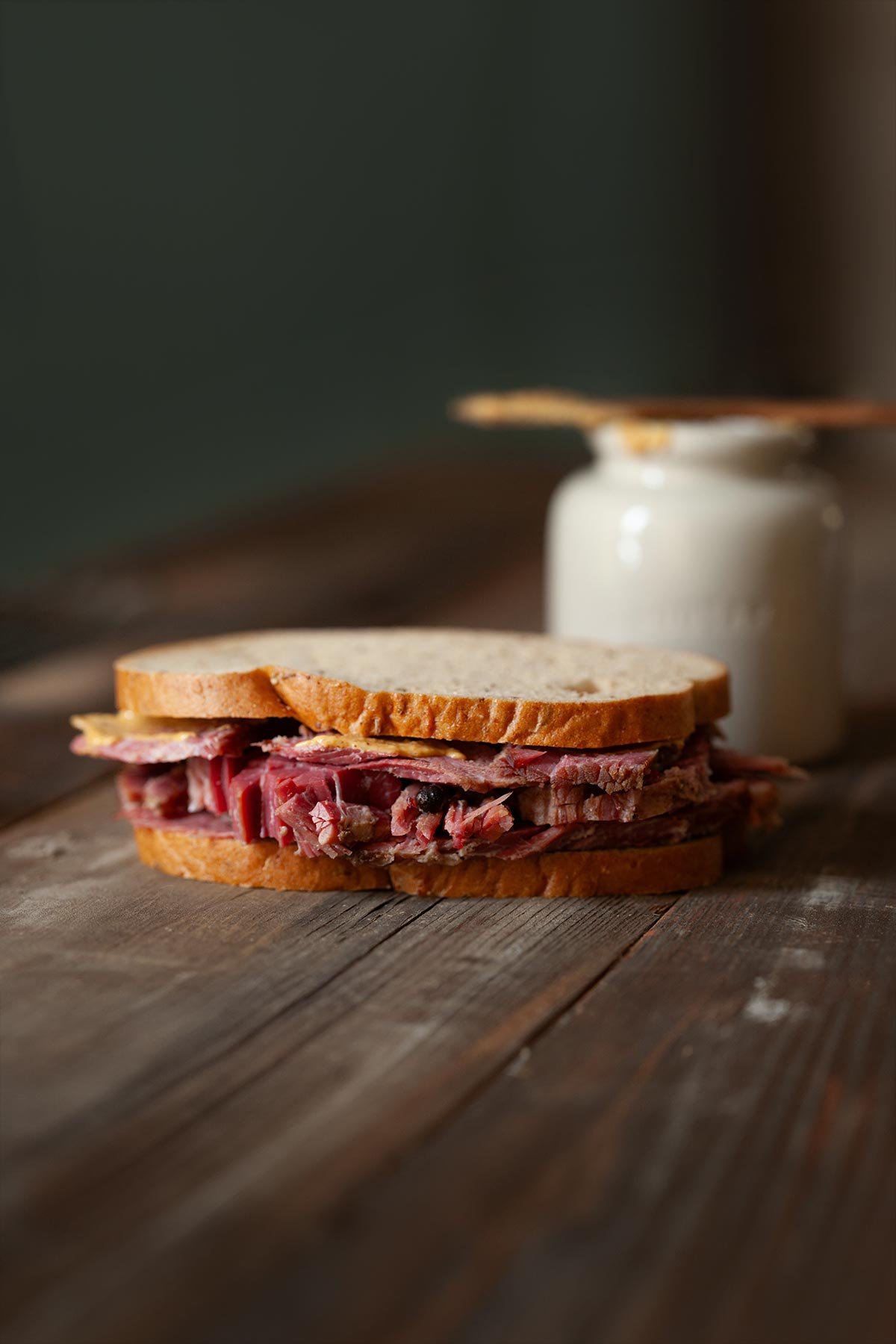
Jump To
- Why Our Testers Loved This
- Notes on Ingredients
- How to Make Corned Beef
- Common Questions
- Pro Tips
- Storage & Reheating
- How to Serve Corned Beef
- More Great Homemade Cured Meat Recipes
- Write a Review
- Corned Beef Cure + Cook Kit
- Video: How to Make Corned Beef
- Homemade Corned Beef Recipe
- Recipe Testers’ Reviews
Homemade corned beef brisket sort of defines Saint Patrick’s Day. And if you’ve heard of it but not experienced it, or maybe downed a few sandwiches of it but still aren’t exactly sure what corned beef is, it’s essentially brisket that’s lingered in a brine solution of corned beef seasonings for a few days. It’s similar to your favorite pastrami recipe but has a unique flavor and texture. It becomes a little salty and redolent of spices and, as it turns out, may be good for you.
See, its brine solution is essentially a pickling liquid. And you’ve certainly heard the buzz in recent years about how healthful pickled things are, yes? Ergo, the only logical thing to do is pickle and consume copious quantities of corned beef. Right?! Or if you don’t buy that, consider that we’re all Irish once a year. Kindly note that you’ll need to start the corned beef five days before you intend to sit down at the table. #worthit

Why Our Testers Loved This
The testers were “astonished” at how easy it was to make this corned beef recipe. Julie Dreyfoos described it as the “best corned beef she had ever experienced,” while Larry Noak proclaimed that he’ll “never buy corned beef again.” Yes, it’s that good.
Notes on Ingredients
- Kosher salt–This makes up the foundation of your brine, allowing the meat to retain moisture and become tender, ensuring perfect corned beef. To avoid making a brine that’s too salty, you must weigh your salt. Crystal sizes can vary from brand to brand, significantly changing the salt level in the brine when measured by volume.
- Sugar–Using sugar in the brine helps to tenderize the meat and add flavor.
- Pink curing salt–This gives the meat its pinkish hue, but its purpose isn’t merely cosmetic. This salt, which contains sodium nitrite, stops bacterial growth during the lengthy curing process and helps to preserve the meat’s flavor and texture. Don’t even think about omitting it.
- Beef brisket–For best results, make your corned beef with first-cut or “flat-cut” brisket. It is leaner than point-cut brisket. If you do make it with point-cut, be sure to trim away any excess fat.
How to Make Corned Beef
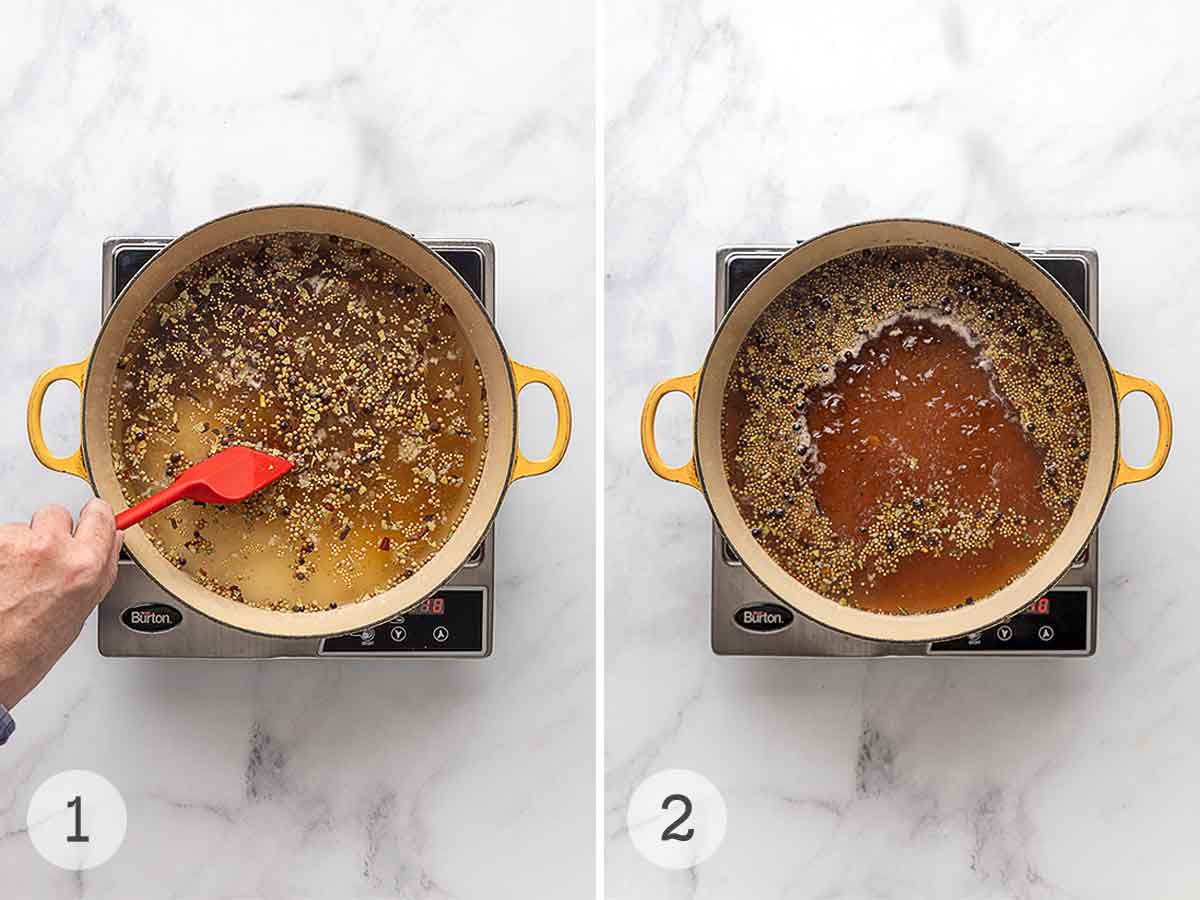
- Toast the peppercorns, mustard seeds, and coriander seeds in a skillet, then use the flat side of a large knife to smash them. Mix them with the remaining spice blend ingredients. Combine 1/2 gallon of water, kosher salt, sugar, pink salt, garlic, and 2 tablespoons of pickling spice in a large pot.
- Bring the brine to a simmer, stirring to dissolve the salt and sugar.
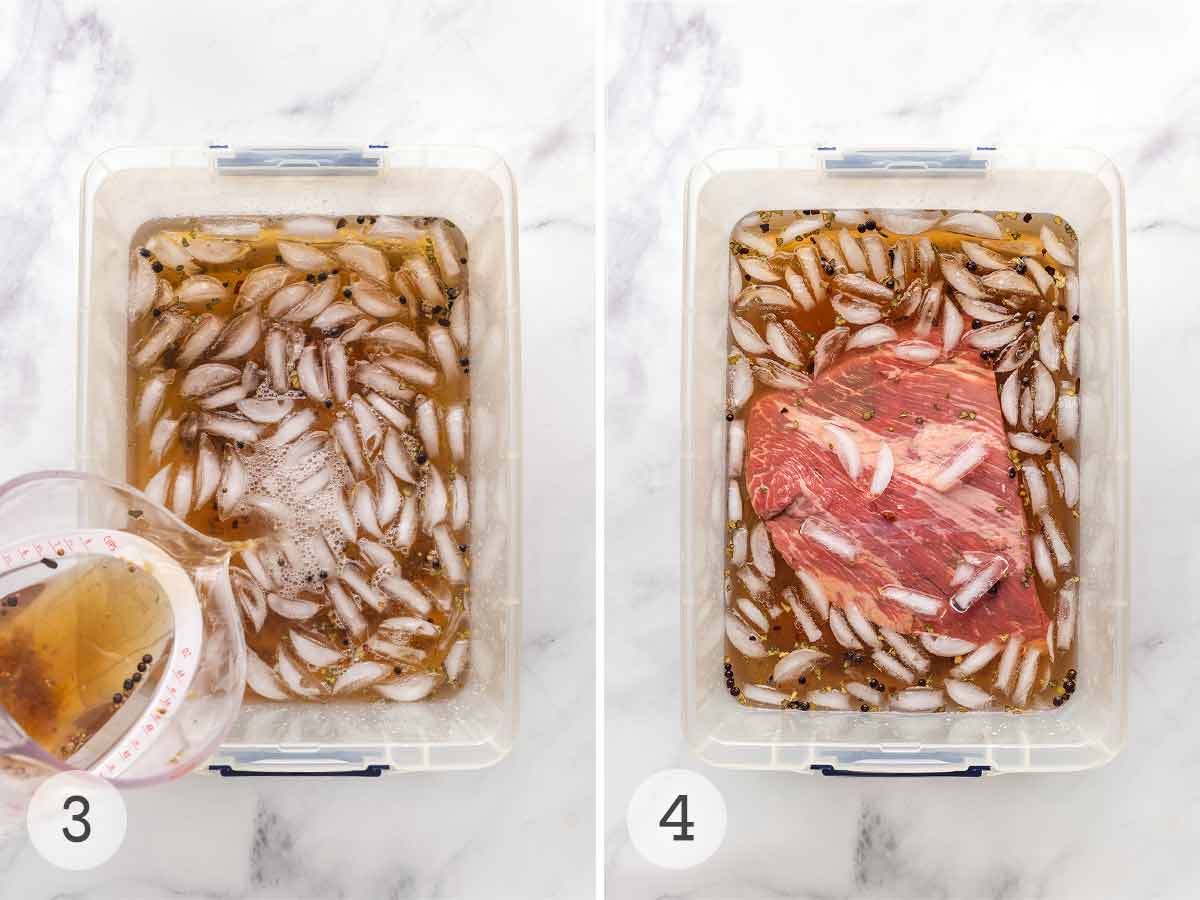
- Combine the brine with 1/2 gallon of ice and water in a container large enough to hold the brisket.
- Add the brisket to the cold brine.
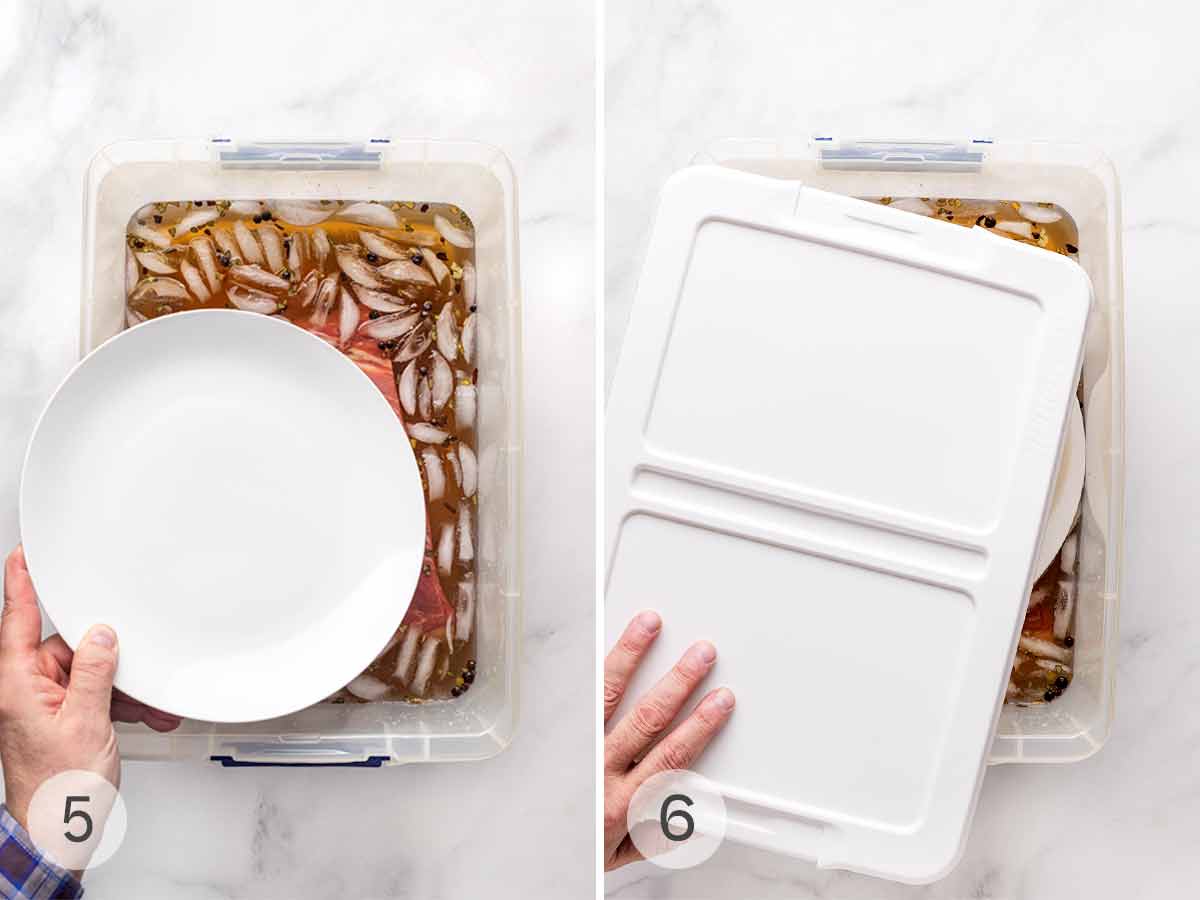
- Submerge the brisket in the brine.
- Cover and chill for 5 days, flipping the brisket occasionally.
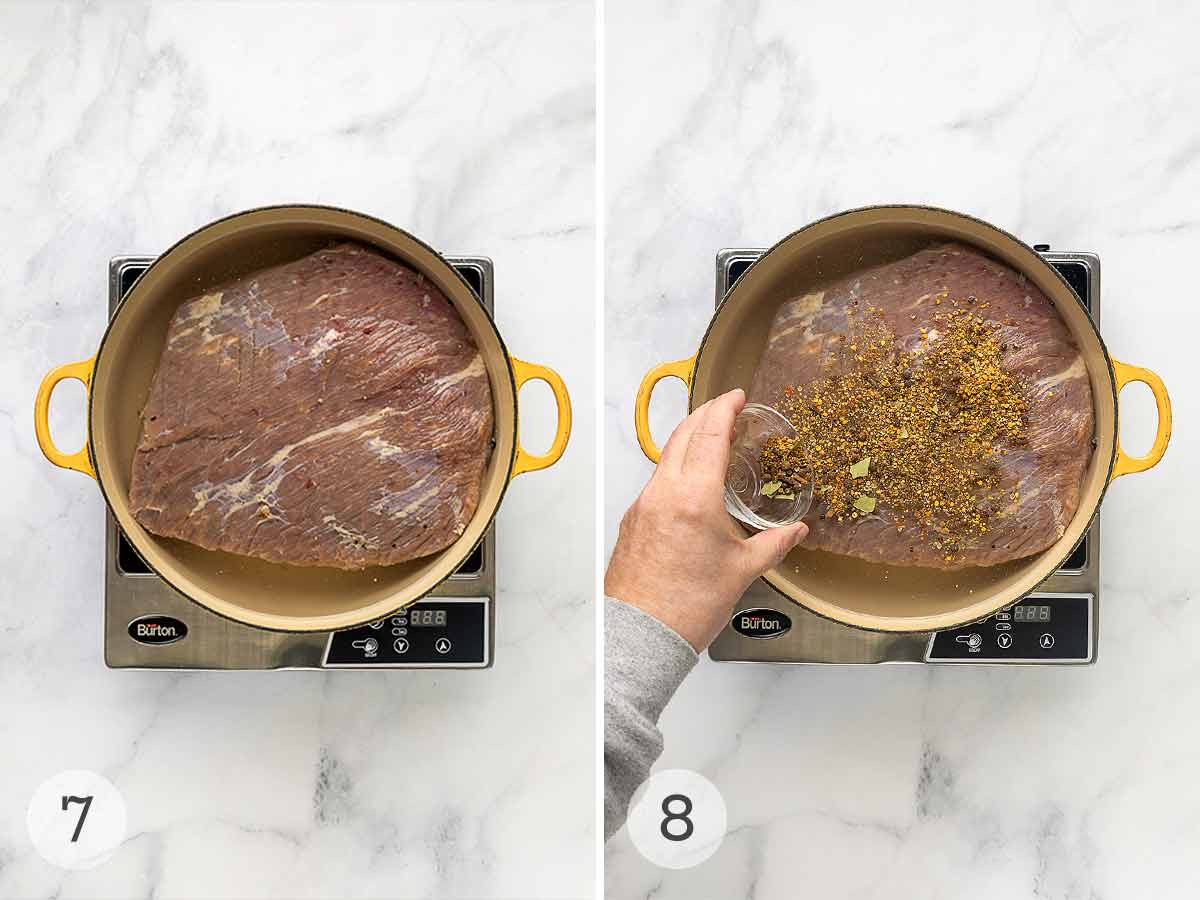
- Drain and rinse the brisket. Place the brisket in a pot large enough to hold the meat and add enough water to cover it.
- Add 2 tablespoons of pickling spice, cover, and bring to a simmer. Cook until fork tender, replenishing the water, if needed.
Common Questions
First-cut brisket, sometimes called the “flat cut,” is the leaner, flatter portion of a whole beef brisket. It boasts a relatively even thickness, making it ideal for slicing against the grain after cooking. The “second cut,” aka the “point cut,” contains more fat, or deckle, and sits on top.
Pink salt is a curing salt containing nitrite. It preserves corned beef’s color, flavor, and freshness and, most important, prevents harmful bacteria growth. Look for it under names like Tinted Cure Mix, Prague Powder #1, or Curing Salt #1. Don’t confuse it with Himalayan pink salt, which is a regular salt.
☞ And don’t confuse this pink salt with Himalayan pink salt, which is entirely different.
To make corned beef with cabbage and potatoes, render the fat from some bacon that you’ve cut into matchstick-size strips in a pot over medium heat. Toss in some large wedges of green cabbage and cook, turning as needed, until the edges are lightly browned. This will impart a little extra flavor oomph to the cabbage.
Add some of the reserved cooking liquid from the corned beef to the pot. Then toss some chunked potatoes and the sliced corned beef in with the cabbage, cover, and cook until the cabbage is tender. (If you prefer the potatoes not pick up any cabbage flavor or color, boil them separately in salted water.)
That steaming liquid transforms into a lovely sauce. If you like, stir in a tablespoon of Dijon mustard for a touch of richness.
Nestle your brined brisket into the slow cooker and add enough water to cover it (if it’s too big, simply cut off a smaller portion!). Toss in 2 tablespoons of your corned beef seasoning mix and cook on low until fork-tender, about 7 hours. Reserve that flavorful cooking liquid for serving if you like.
Slice the corned beef and enjoy warm, or cool, wrap, and refrigerate for up to a week.
Want more slow-cooker tips? Check out Jackie G.’s comment below – she turned her leftover brisket into homemade pastrami!
Pro Tips
- If you find it difficult to keep the brisket submerged in the brine, place something heavy (a plate of a few canned goods are great for this!) in a sealed plastic bag and set it on top of the brisket to weigh it down.
- If your brisket is too big to fit into the brining container in one piece, cut it in half.
- This homemade corned beef recipe is suitable for gluten-free and dairy-free diets.
Storage & Reheating
Corned beef can be stored, tightly wrapped in plastic or aluminum foil in the refrigerator for up to 1 week. For longer storage, freeze individual portions tightly wrapped in plastic or sealed bags for up to 6 months.
How to Serve Corned Beef
There are many ways to enjoy homemade corned beef. For a traditional meal, serve it sliced with cabbage and potatoes, or enjoy it in a reuben sandwich, made with rye bread, Swiss cheese, sauerkraut, and Thousand Island dressing.
It’s also terrific with potatoes in corned beef hash, or added to twice-baked potatoes.
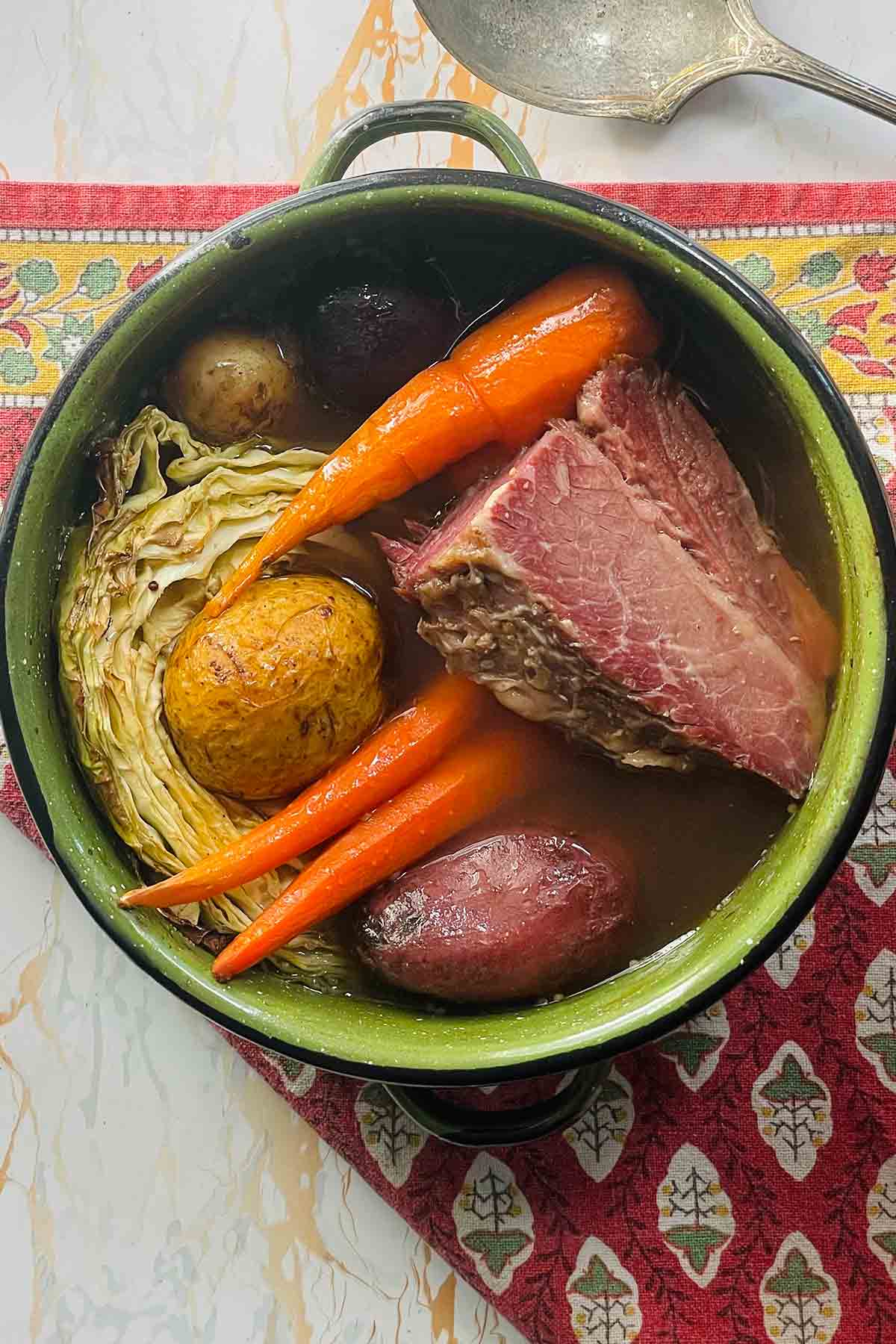
Write a Review
If you make this recipe, or any dish on LC, consider leaving a review, a star rating, and your best photo in the comments below. I love hearing from you.–David
I make corned beef for my husband. I personally do not care for it. This recipe has totally changed my mind!
The meat was so tender and so flavorful. I will never make corned beef a different way. Looks like we will have a new tradition in our family!
Alison M
Video: How to Make Corned Beef
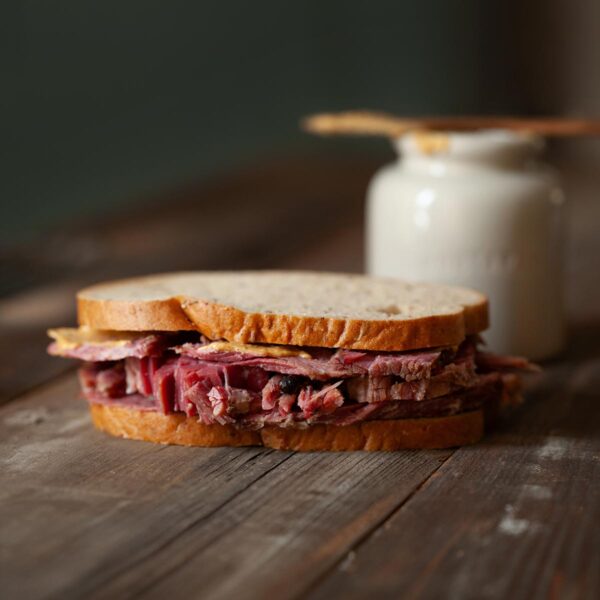
Homemade Corned Beef
Equipment
- Slow cooker (if following the slow cooker method)
Ingredients
For the pickling spice
- 2 tablespoons black peppercorns
- 2 tablespoons mustard seeds
- 2 tablespoons coriander seeds
- 2 tablespoons crushed red pepper flakes
- 2 tablespoons allspice berries
- 1 tablespoon ground mace
- 2 small cinnamon sticks, crushed or broken into pieces
- 2 to 4 bay leaves, crumbled
- 2 tablespoons whole cloves
- 1 tablespoon ground ginger
For the brine solution
- 1 gallon water
- 2 cups Morton kosher salt, (or 3 1/3 cups/450 g Diamond Crystal kosher salt)
- 1/2 cup granulated sugar
- 2 teaspoons pink salt, (see FAQs)
- 3 garlic cloves, minced
- 2 tablespoons pickling spice (above), (see above recipe or use store-bought)
- One (5-pound) well-marbled (first-cut) beef brisket
Instructions
Make the pickling spice
- In a small, dry skillet over medium heat, toast the peppercorns, mustard seeds, and coriander seeds until the spices are lightly toasted. Carefully turn them onto a cutting board and carefully smash them using the flat side of a chef's knife to crack them, being careful to not let the seeds roll all over your counter and onto your floor.
- Scrape the cracked spices into a large plastic container or glass jar or other nonreactive container and add the remaining ingredients. Stir until completely combined. Cover tightly.
Make the brine solution
- In a pot that's just large enough to hold the brisket, combine the water, salt, sugar, pink salt, garlic, and 2 tablespoons pickling spice.
- Bring to a simmer, stirring until the salt and sugar dissolve.
- Remove the pot from the heat, let the brine cool to room temperature, and then refrigerate until the brine is completely chilled. For a quick chill: Bring 1/2 gallon of water to a simmer, add the brine ingredients, and stir until dissolved. Slide the pot off the heat and add 1/2 gallon of ice and water. Make sure the water is cool before adding the brisket.
- Place the brisket in the chilled brine and weight it with a plate to keep it submerged. Refrigerate for 5 days, flipping the brisket once or twice.
- Remove the brisket from the brine solution, discarding the brine. Rinse the brisket thoroughly under cool running water. (Don't worry, you're just rinsing the brine solution from the surface of the brisket. The brine will continue to permeate the beef and work its considerable magic.)
Cook the corned beef
- To make the corned beef in your slow cooker, see the Slow Cooker Variation in the FAQs above.To make the corned beef on the stovetop, reach once again for a pot just large enough to hold the brisket. Place the brined brisket inside and add enough water to cover the meat. Add 2 tablespoons of pickling spice and bring to a boil, then reduce the heat, cover, and gently simmer for about 3 hours, or until the brisket is fork-tender. You want to make certain that there’s always enough water to cover the brisket. You may need to occasionally replenish the water if it gets too low.
- When the corned beef is done, remove it from the cooking liquid, which can be reserved, and place it on a cutting board. Slice the corned beef and serve it warm, with cabbage and potatoes if desired (see the Variation in the FAQs) or cool it, wrap it, and refrigerate it for up to a week to use in this Reuben sandwich. It's also not too shabby in corned beef hash. You can dribble the cooking liquid over the cabbage and vegetables or cover and refrigerate the liquid and rewarm it along with your leftover corned beef.
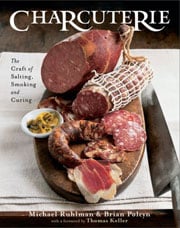
Nutrition
Nutrition information is automatically calculated, so should only be used as an approximation.
Recipe Testers’ Reviews
I decided to make the “real thing” for St. Patty’s Day this year and brined a 6-pound, well-marbled, first-cut beef brisket.
After its bath in the corned beef seasoning brine for 5 days, I decided to cook the brisket in our slow cooker instead of on top of the stove. I couldn’t fit the entire brisket in my 5 1/2-quart slow cooker, so a 3-pound chunk went into the slow cooker and the rest went back into the fridge.
At first, the brisket was submerged under the water. When I checked to see how it was doing after 1 1/2 hours, the meat had curled up and was sticking out of the water. I pushed it down, but wasn’t terribly concerned because brisket tends to shrink quite a bit. Sure enough, after 30 more minutes, the brisket was, indeed, covered with liquid.
The brisket cooked for a total of 7 hours on low. I suggest you check to see how the meat is doing along the way, even though some folks warn that you should never lift the lid of a slow cooker. I find that it does not add much cooking time at all. For me, and this particular piece of meat, at that 7 hour mark, the corned beef was tender.
Alongside the brisket I served a casserole of chopped potatoes, cabbage, and onion, which I’d sautéed in bacon fat and then finished in the oven with some Comté cheese on top. As much as we enjoyed the brisket on the first night with the casserole, we enjoyed the leftovers even more. I made this wonderful corned beef hash twice and served it with poached eggs.
So, what to do with the other remaining brisket that didn’t fit in the slow cooker? There was no question. When life gives you brined brisket, make pastrami.
I will never buy corned beef again after making this recipe. Turns out, pickling even substandard brisket with this astounding potpourri of aromatic spices will change your life forever!
I was very concerned that my brisket was going to be not good enough because when I got it home, I realized that it was graded select. I made the recipe anyways but put a layer of plastic wrap on top of the brine and brisket and then added the plate to hold it all together. I was surprised at the ease with which this came together and truly astonished at the final result.
I found the simplest way to acquire the pink salt was on Amazon. For around $10, you’ll secure enough for many, many pounds of homemade bacon and corned beef.
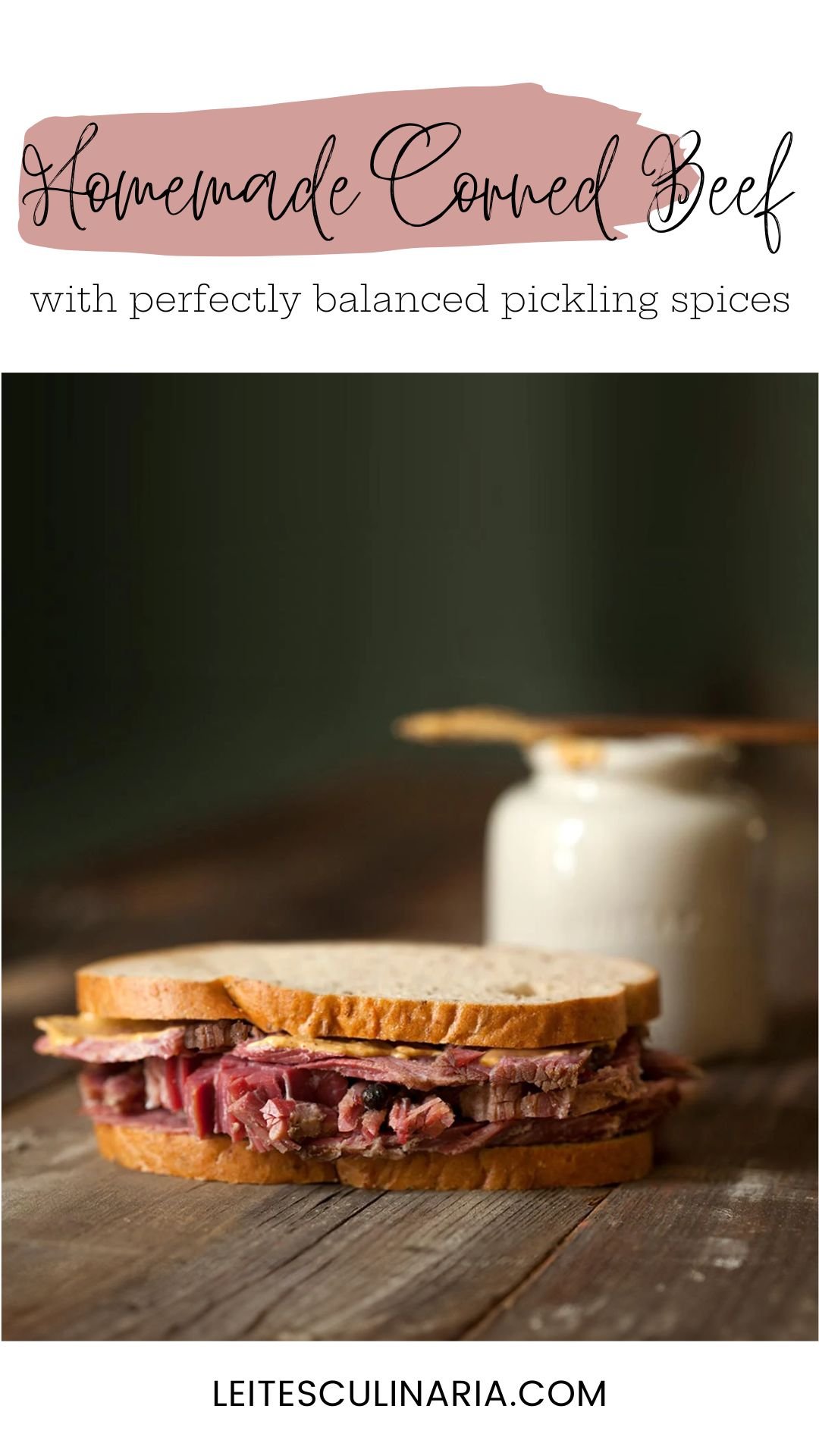
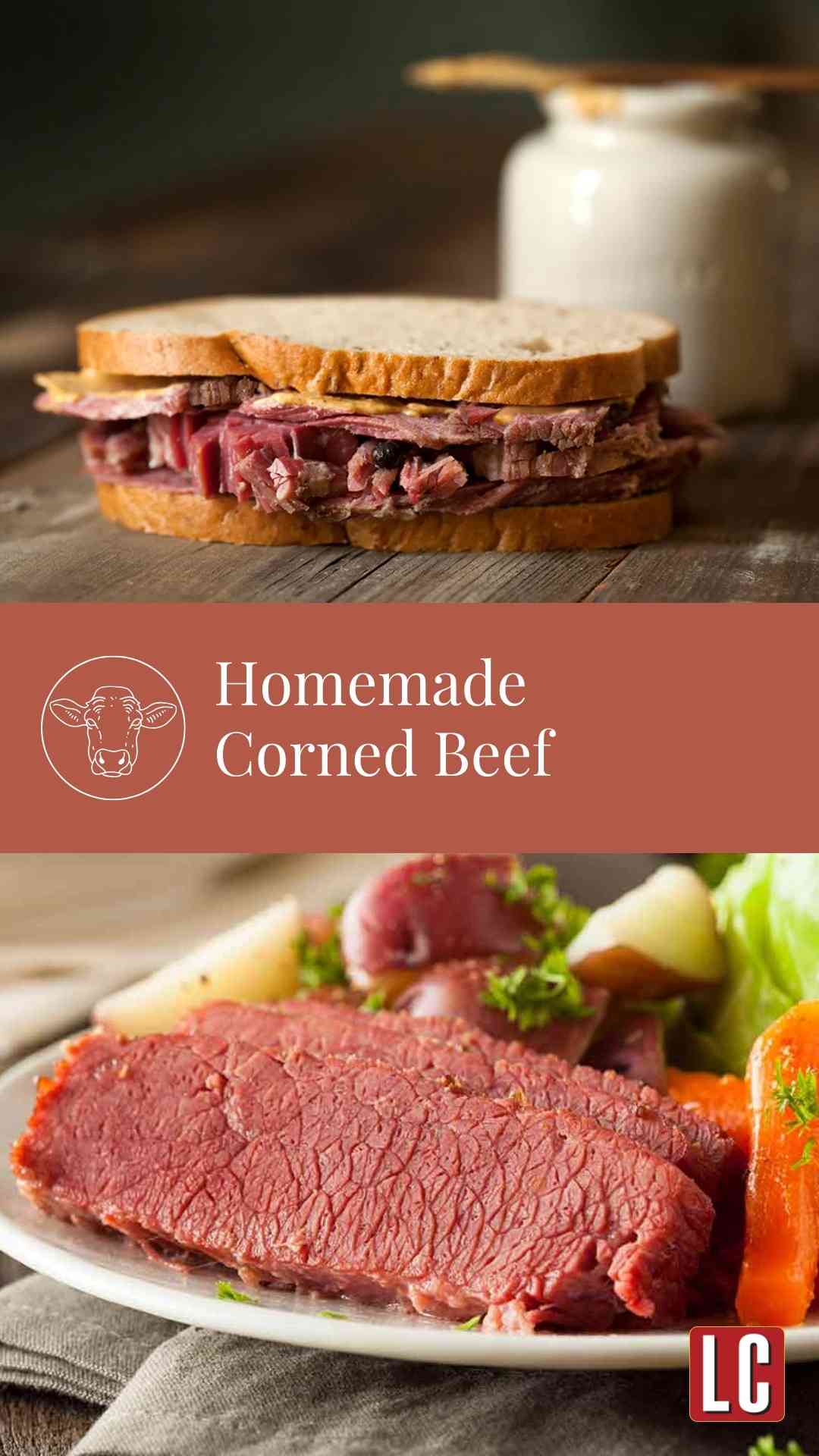
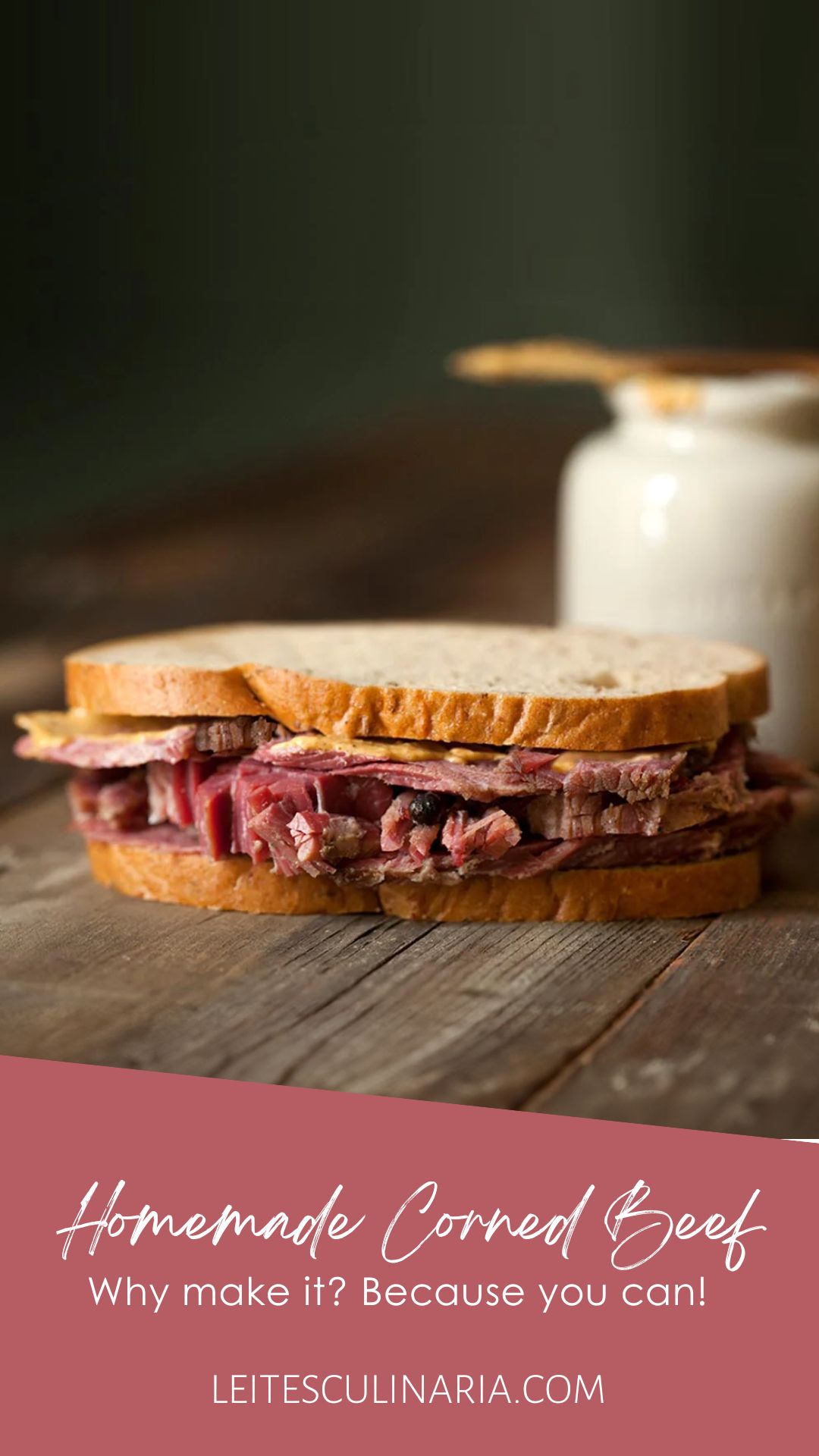
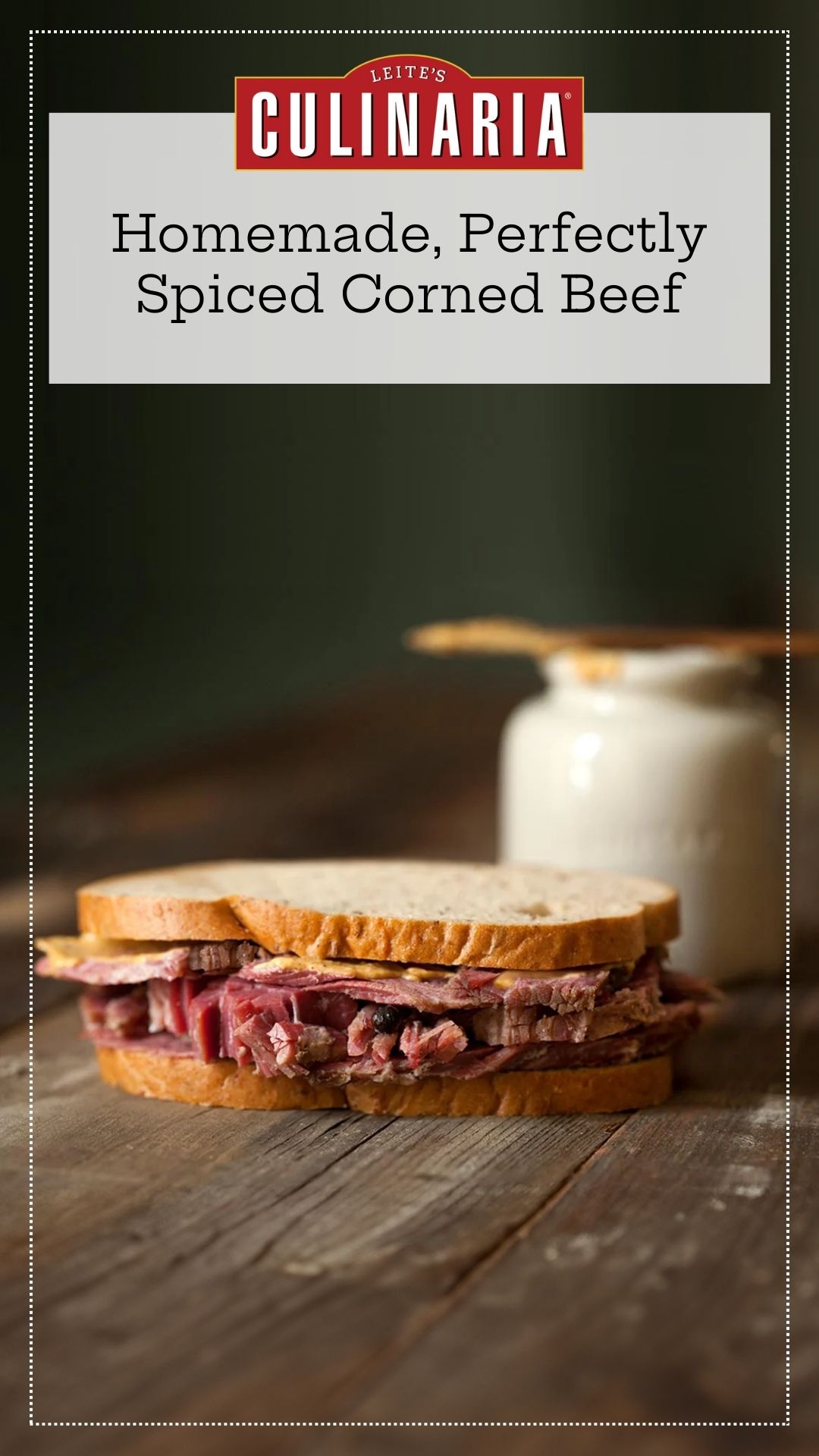
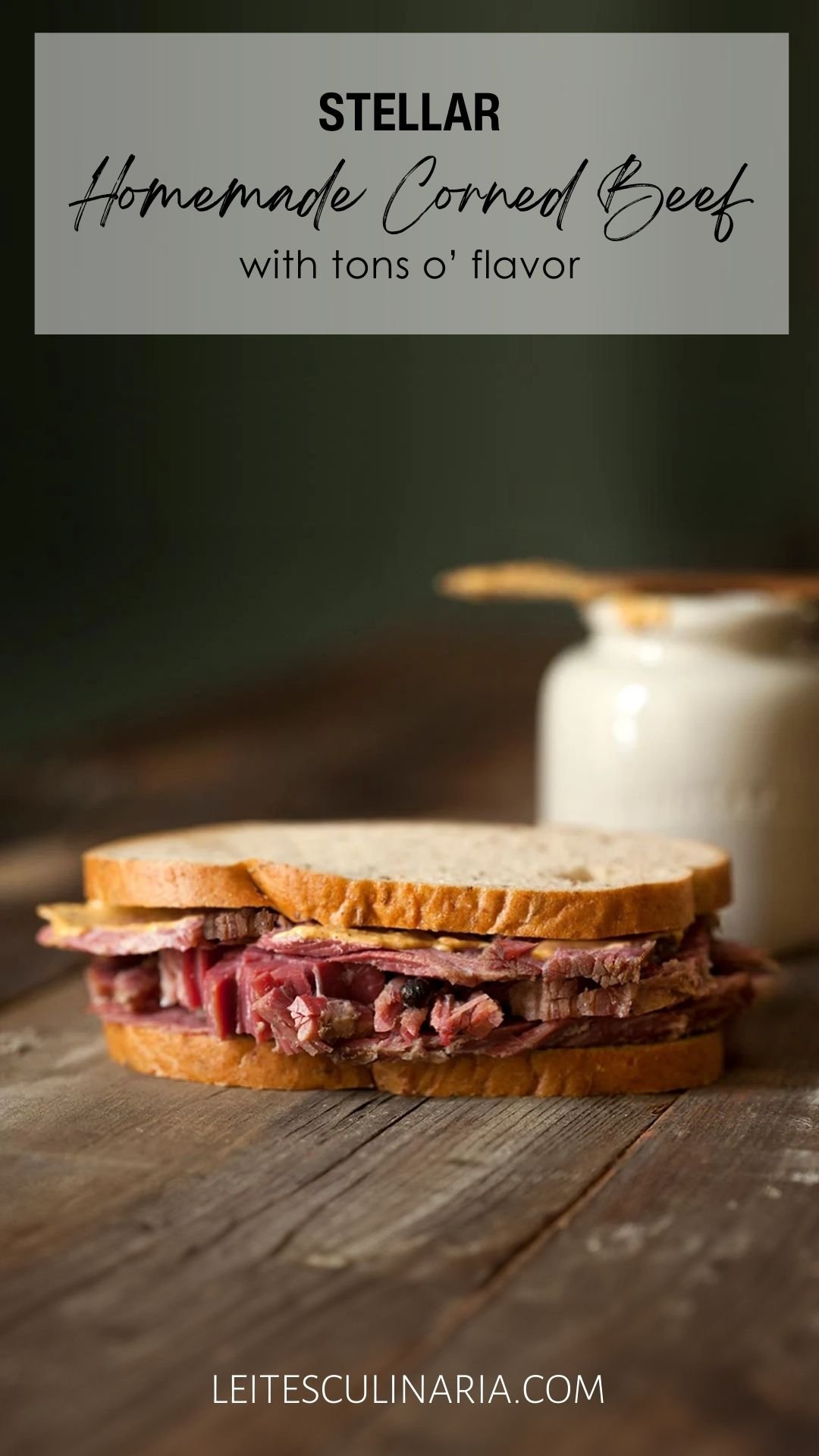
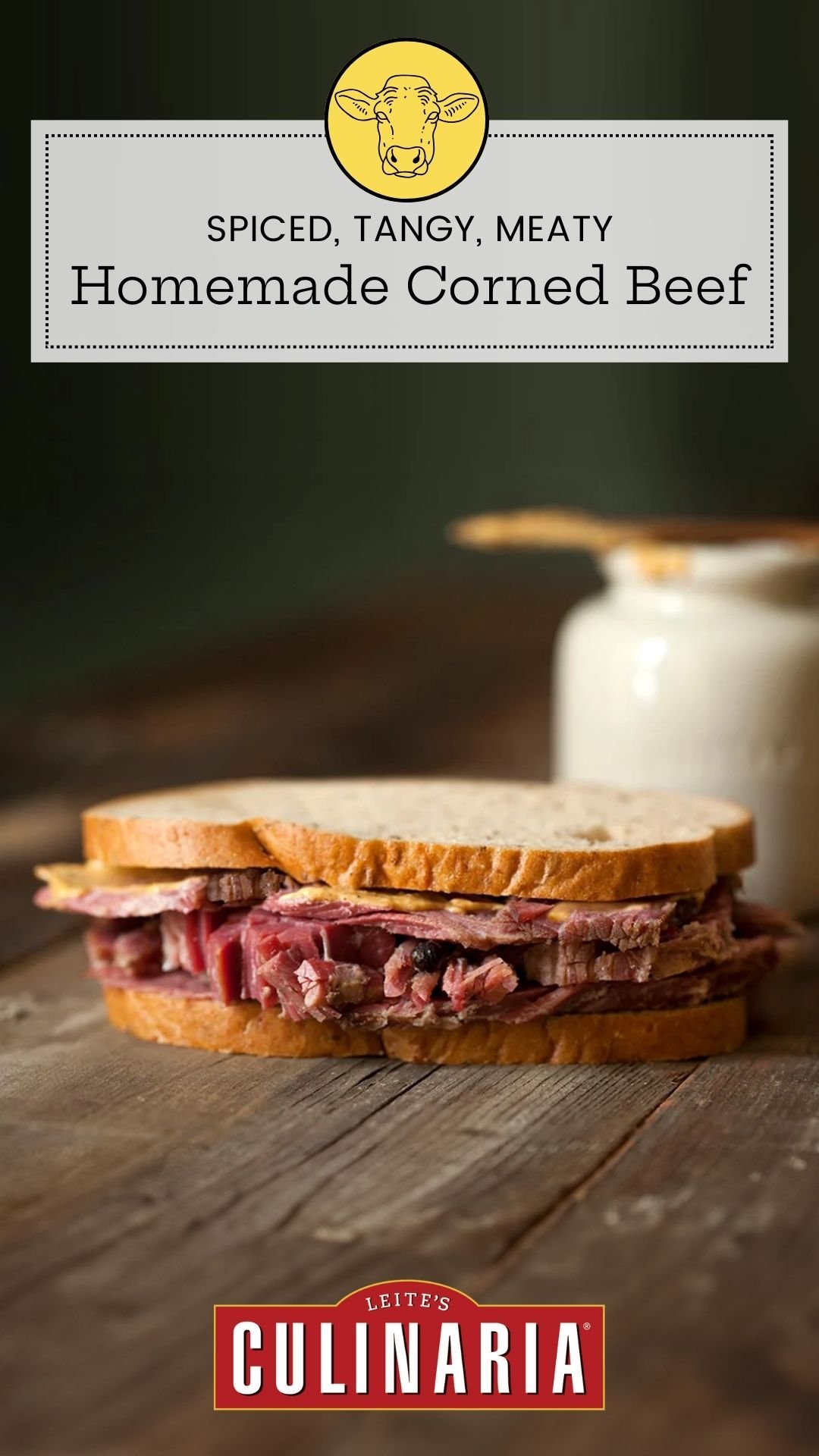
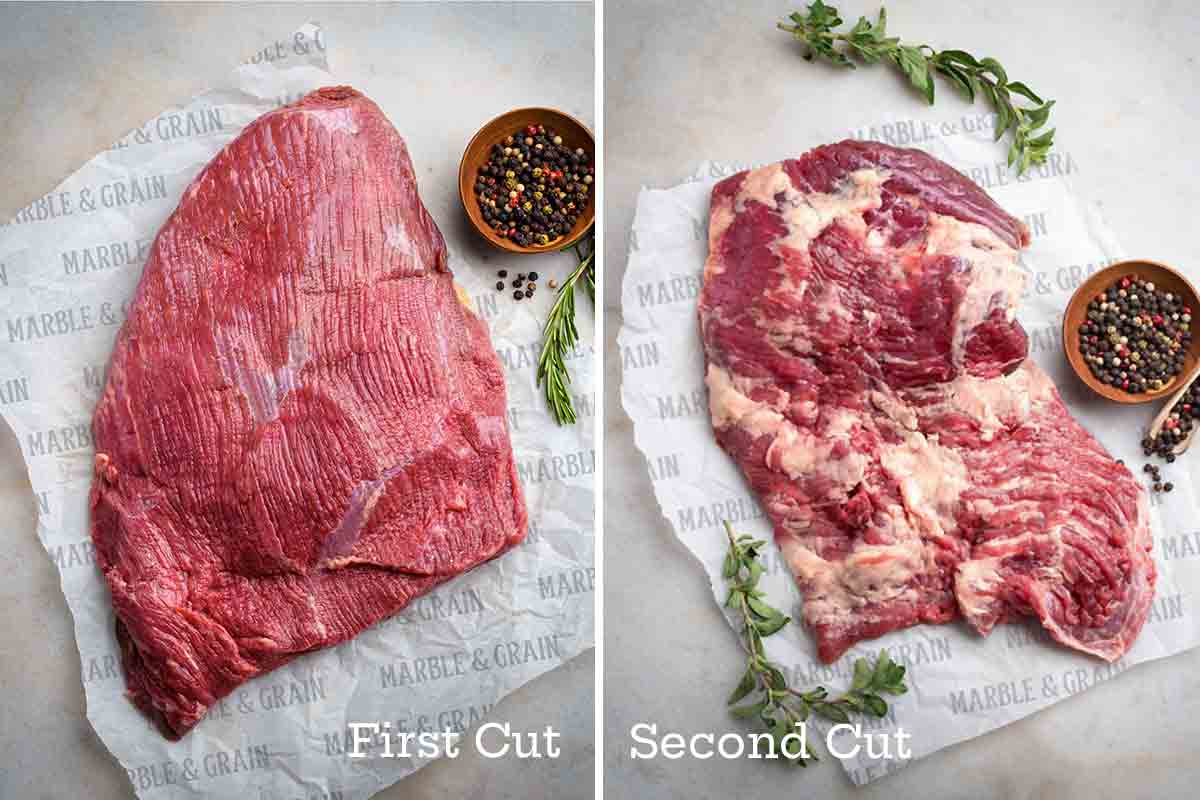
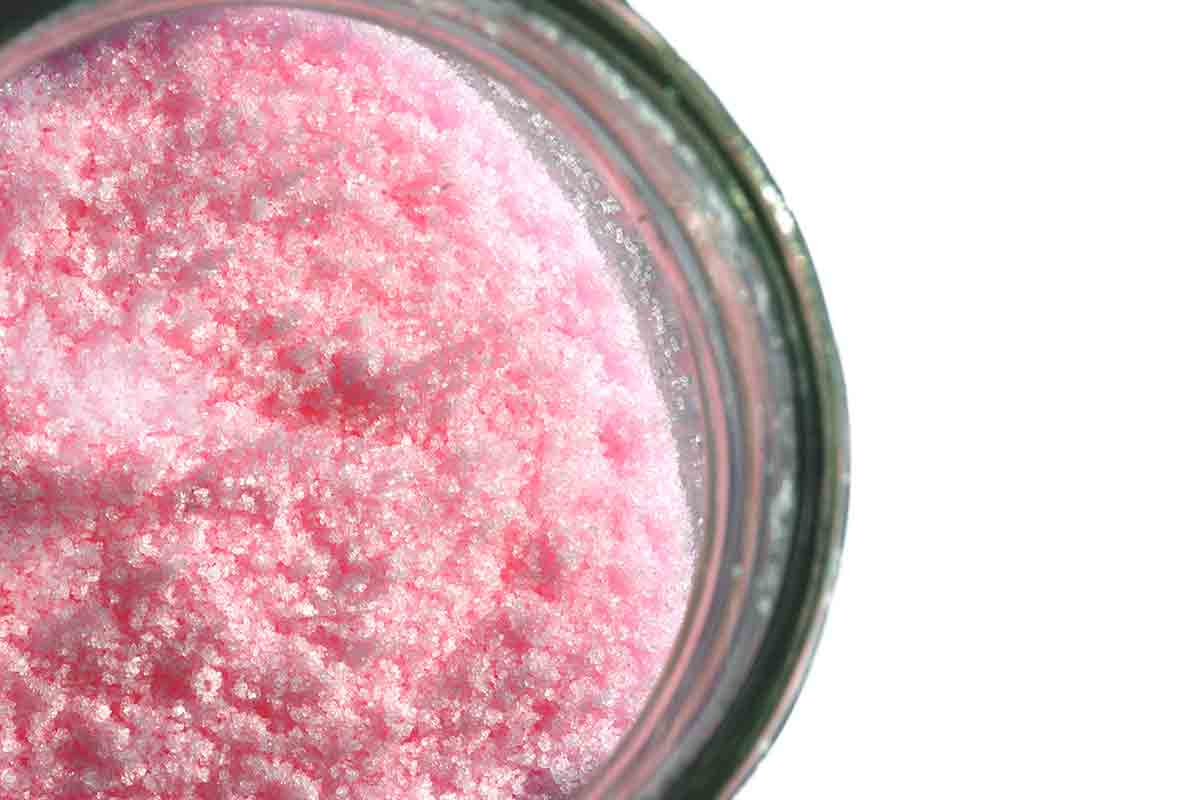
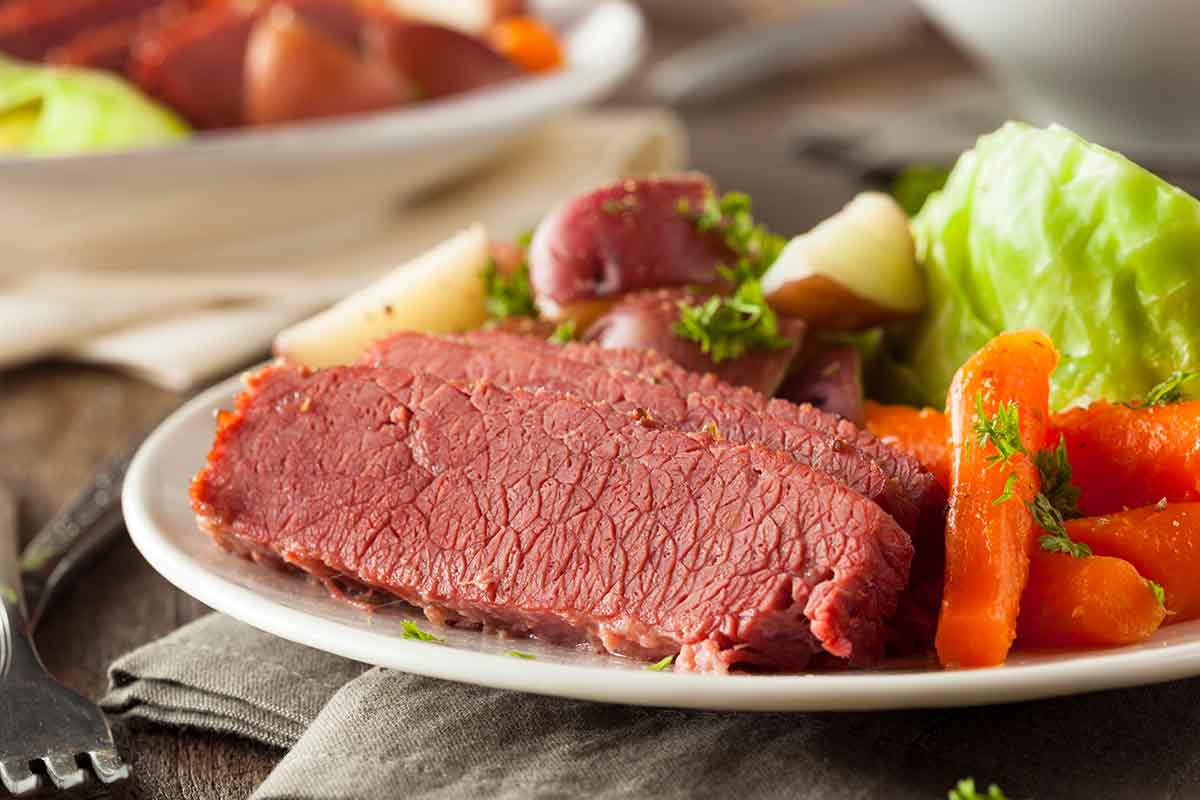
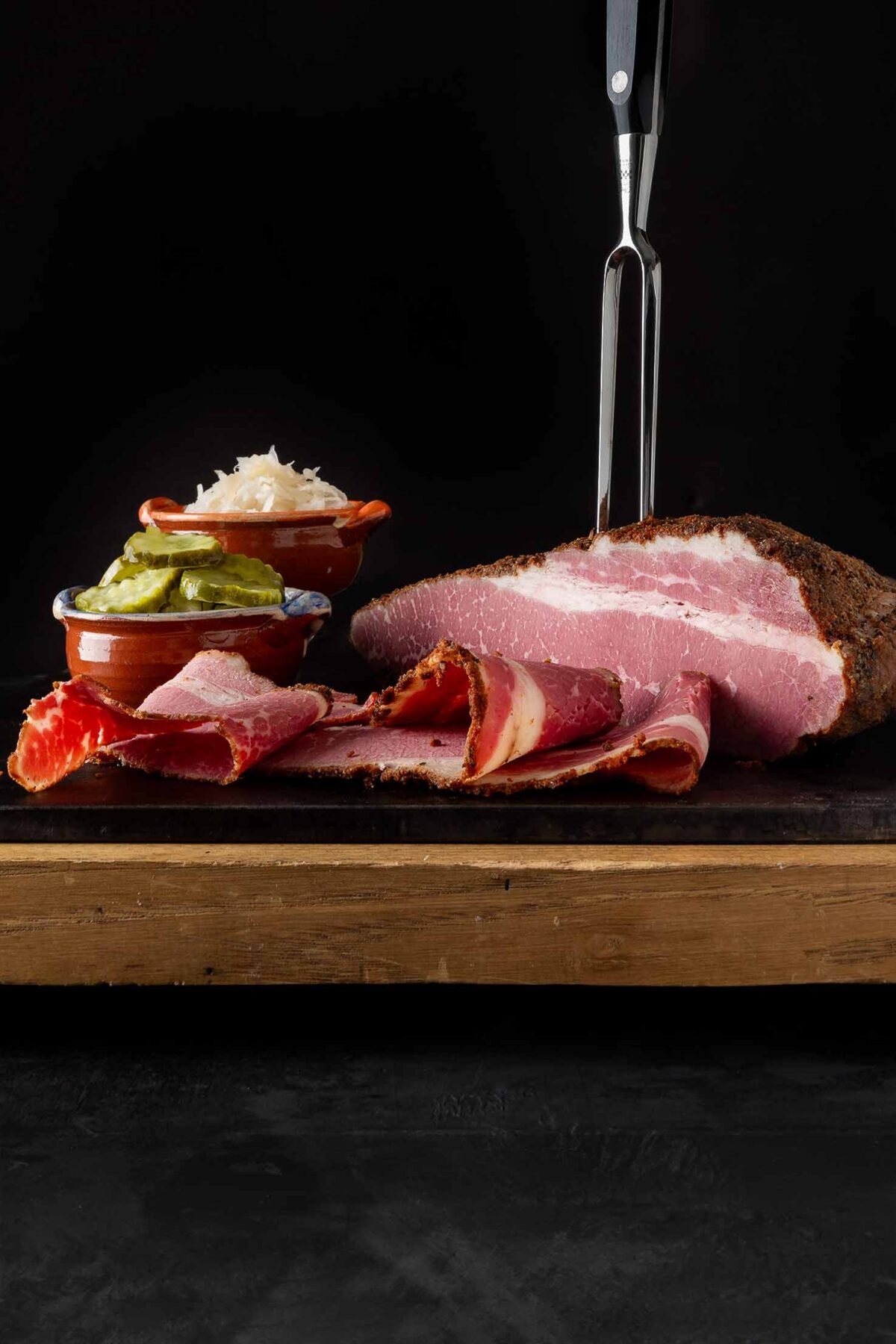
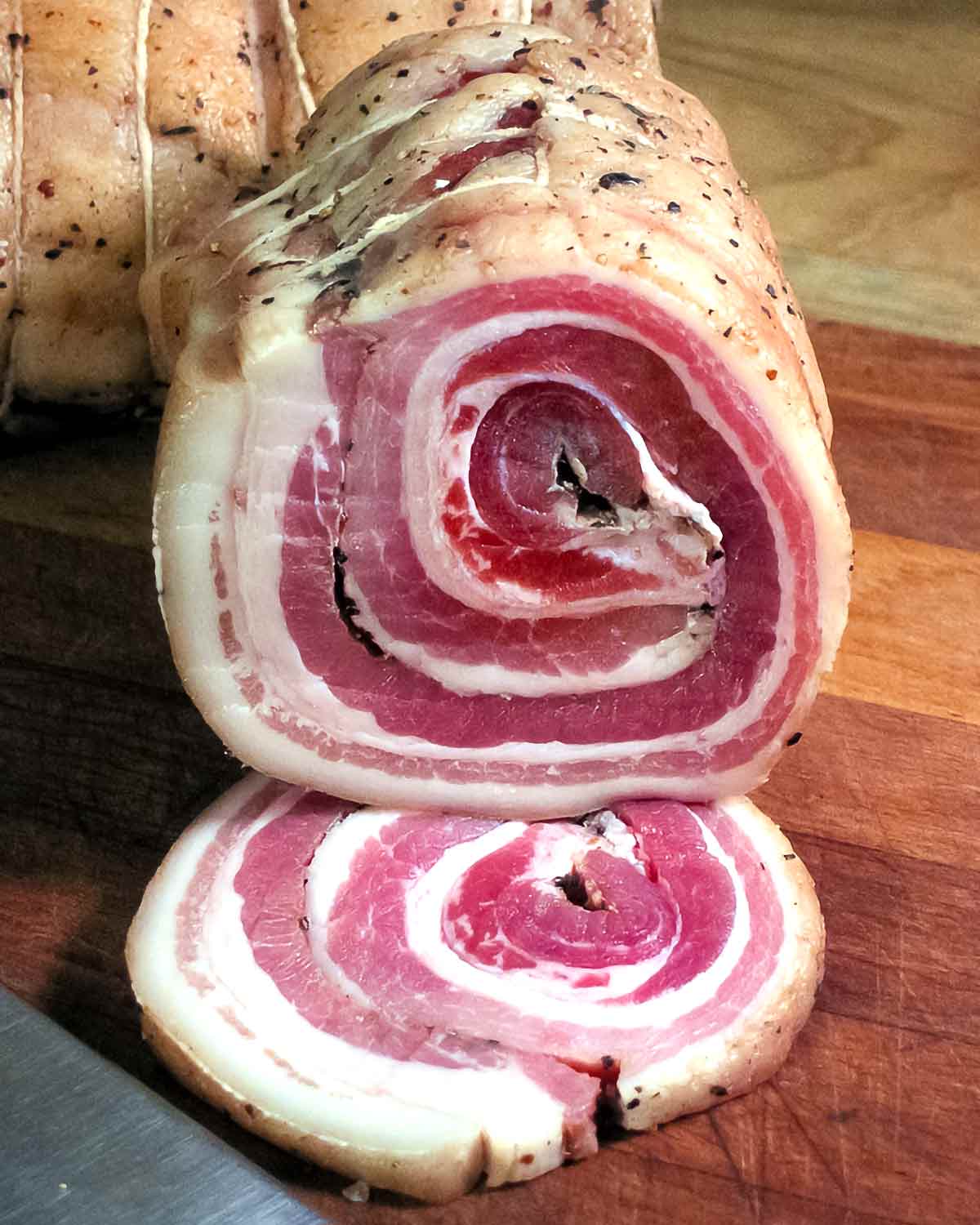
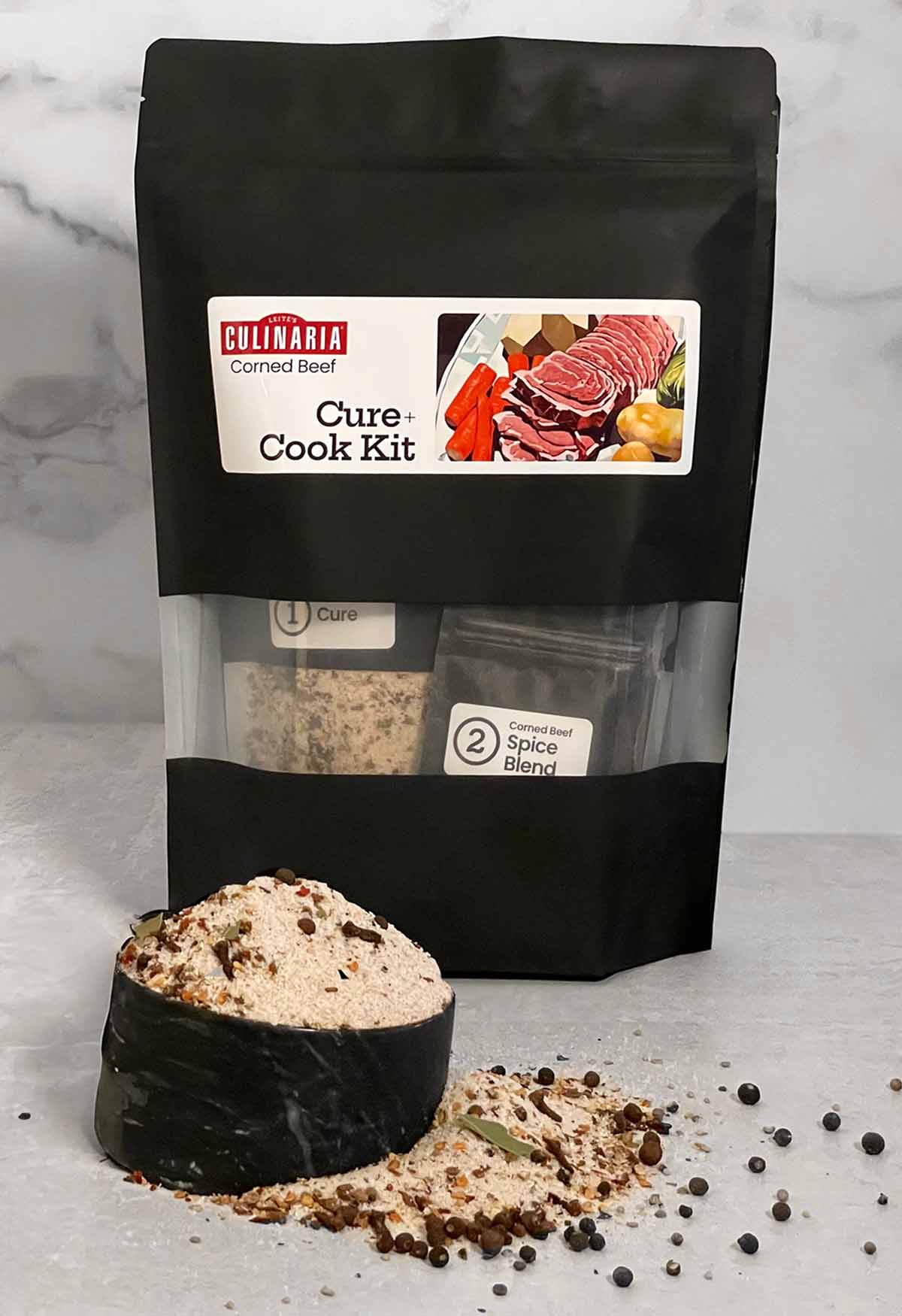
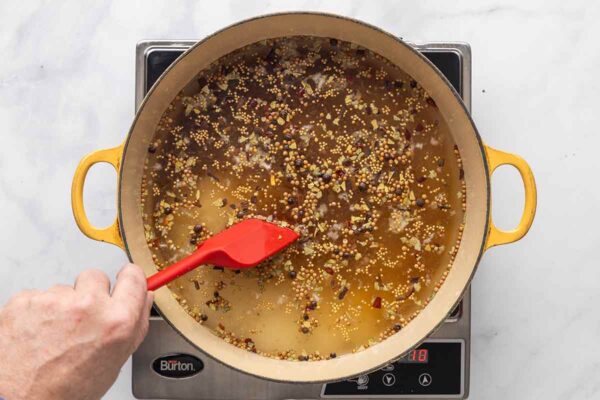
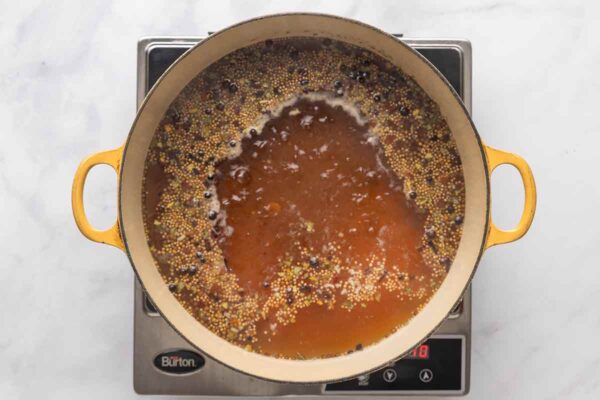
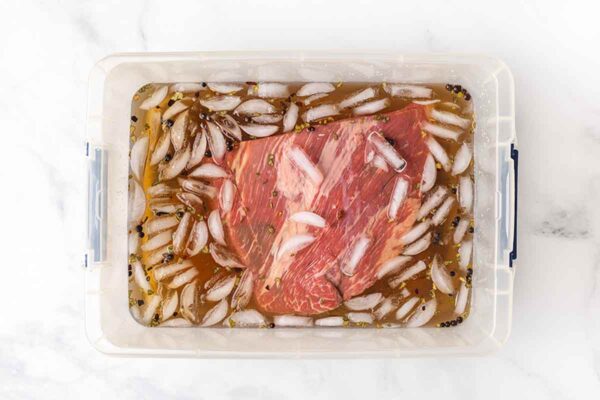
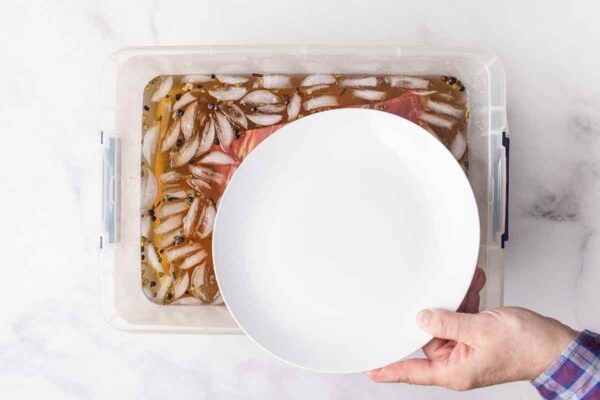
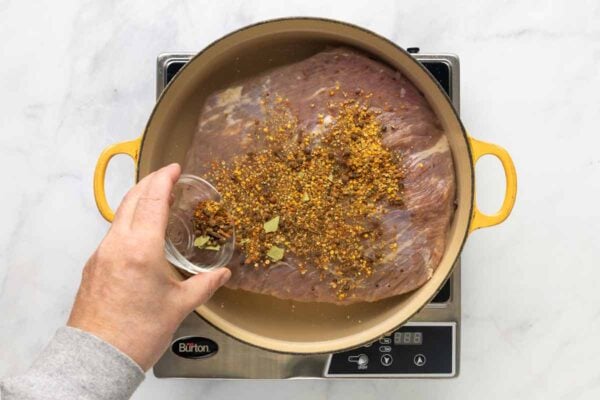












So the results are in… it turned out wonderfully! The beef was so tender, the shreds were falling apart. I know some cooks out there like Jaden Hair over at Steamy Kitchen like to prepare/steam their vegetables separately from the corned beef, but I always dumped the vegetables into the pot for the last 30 minutes or so. I love the briny taste the cabbage takes on after a quick bath with the corned beef. The meat is very dense so I couldn’t eat much of it, but I will definitely be making sandwiches this week! Thanks for the great recipe Ruhlman! Here are photos of my entire process, from brining to meal:
Marshall, I’m so glad to hear it turned out well for you. It looks great.
I just bought all of the ingredients today at Kalustyan’s on 28th/Lexington. Well not all of the ingredients, but I bought the curing salt (#1) and the pickling spices at Kalustyan’s. Then I went across the street to that Halal butcher (Lahori Market; the butcher’s name is Arshad I believe) and bought a unidentifiable piece of beef. I’m not really sure what it is; he wasn’t able to tell me what part of the cow it came from. I’m not sure how it will turn out; it has very little marbling (not a good sign right? I won’t get a lot of flavor is my hypothesis), is very dense (again, from the low fat content) and looks nothing like the pictures on google images of “beef brisket.” I figured it was only $3.99/lb (that’s CHEAP for NY meat prices; especially for Murray Hill imo) and corned beef was originally meant as a way to preserve meat by poor people and make the meat more palitable so I figured any chunk-o-beef would work. I’ll be putting pictures on my website when I get to cooking the piece later this week. I will start curing tomorrow!
Such culinary curiosity, Marshall! Just what we like to see. I agree that typically marbling lends to lovely flavor, although with all the spices in the corned beef, I actually have high expectations. Do let us know how it goes, and definitely post some pics of the raw cut of beef so we can all jump in as crackpot butchers and try to identify it!
So the brine is cooling down right now and everything seems to be on track for St. Patrick’s day. I’m going to go over the 5 days recommended in this guide because I have found other recipes on the net that call for up to 2 weeks. St. Patrick’s day is a week away, so I figure 7 days is probably just the right amount of brining time.
Anyways, here is a photo of the raw piece of beef I purchased from Ashad. Maybe an expert can identify it?
Definitely not a brisket…way too lean…
Hello, Marshall. That looks very much like a bottom round roast. It’s not the ideal candidate for corned beef. Brisket, as the recipe states, is really the best. It has the right shape and thickness to allow for maximum penetration of the corning solution as well as the right meat-to-fat ratio.
Hi David,
Do you think it will work at all? Should I keep going with this?
Hi Marshall, I think you might be disappointed in the results. Did you ask the butcher for brisket?
He couldn’t understand me. I was asking him if he had brisket and he just showed me this other cut of meat and told me that he had beef. It was a language barrier thing. I did a quick google search and the wikipedia article for corned beef says it is usually made with “brisket or round steak” then I also found a recipe using round roast.
I think I’ll keep going with it and if it isn’t satisfactory I’ll redo it with a brisket. In fact even if it is satisfactory I will. I love corned beef. I could eat it everyday!
Hey Marshall. As Terry says in her recipe, it makes a lean corned beef–not the stuff you could eat all day! That’s fattier and probably more tender.
Well I turned it over today in the brine to make sure it is evenly brined (this is probably unnecessary in hindsight given the entire thing is submerged; I really just wanted to take a peak!). When I was turning it I noticed some nice fatty portions throughout the other side of the cut. So while it’s positively not a brisket, hopefully it won’t be a complete disappointment. :/. I’m counting down the days until Saturday. I’ll give everyone a complete photo walk through of my meal with a breakdown of how it turned out. On another note, I think it’s really awesome that you respond to comments on your site, David. I think that’s really great and it makes it so much more personal. Truly an inspiration!
Marshall, I look forward to the images. Realize that it might take a bit longer to brine, and also to cook, because from the photo it looks much thicker than a brisket. And thank for the kind words about our commenting. We trying for a “no comment left behind policy.” Sometimes a comment slips by without us noticing, but we get to them all eventually.
David’s right on the cut and the fact that it’s really too lean to simply eat on it’s own. It will be corned and tasty, though, so just find some way of getting more fat on the plate or sandwich—for a quick fix, mix whole grain mustard with mayo. Better still, make your own mayo!
Yah, after it was mentioned that it will be too dense to eat as a main course, I began contemplating sandwiches for next week. Thankfully it’s only 2.5 pounds of beef.
I’m having a hard time finding brisket in Manhattan, and I want to redo this the right way with a brisket next week or the week after. Do you have any suggestions, Mr. Ruhlman, on where to find brisket in the city? I’ve tried several Hispanic carnicerias in Morningside Heights near my place, asking for “pecho” but to no avail.
Marshall, I contacted Citarella for you, and they do indeed have first cut brisket. You can call (212) 874-0383, press #1, and you’ll be connected to a sales rep who will order for you. It usually takes one day.
And Marshall, here is Michael’s excellent mayonnaise recipe.
David, I came across your blog just today, as I am planning to make corned beef for the first time this St. Paddy’s day. The first recipe I came across didn’t include ANY pink salt in the brine. The recipe did admit that the color would not look traditional, but the flavor would be the same. I’m wondering what you think about omitting pink salt entirely. Also, I live in Singapore and though I haven’t gone on the hunt, I’m not sure I’ll be able to even get it here.
Hi Gail, if you found another recipe that doesn’t include pink salt, then I’d encourage you to use that one. Michael says the pink salt “changes the flavor, preserves the corned beef’s red color, prevents fats from developing rancid flavors, and prevents many bacteria from growing.” I’m concerned if you don’t use it, your meat might develop rancid flavors or certain bacteria. The other recipe might take that into account with its ingredients. I’d rather you be safe than sorry.
Actually, there’s no bacterial risk here given salt content and the fact that it’s fully cooked. Ok to omit pink salt.
Michael, thanks for weighing in. I think info will be very useful to readers who are concerned about using pink salt or are concerned about bacteria.
Thank you Michael, and that’s good to hear, because I couldn’t find pink salt here, and I decided to go ahead and try it with just salt. It’s on day 3 of marinating and I look forward in 2 days to the final product.